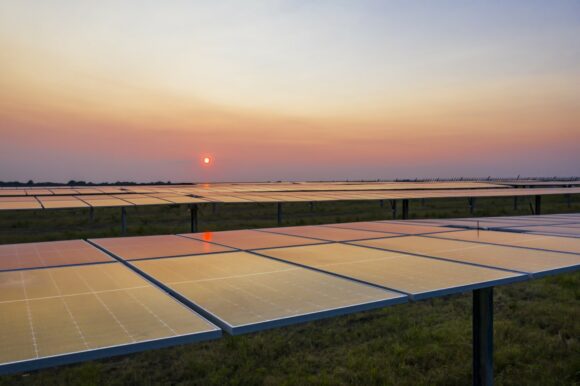Misinformation Rampant About Cause of Spanish GRID Blackout: Cause is Now Known
By George L. Strobel II
In the wake of last month’s massive blackout that disrupted power across Spain, Portugal, and parts of southern France for more than twelve hours, speculation ran wild over the cause of the blackout. Was it a cosmic event? A technical breakdown? Or a sign that Europe’s increasingly renewable-heavy energy infrastructure was reaching a breaking point? Now, with the dust settled and new reports emerging, the truth behind the blackout is finally coming to light—and it’s far more surprising than expected.
Speculation and Theories Abounded
In the immediate aftermath of the April 28th blackout, theories flourished. Online forums, energy blogs, and news outlets were ablaze with conjecture. One of the earliest and most widely circulated theories was that a solar flare—a powerful burst of radiation from the sun—had disrupted satellite communications and sensitive electrical equipment on the ground.
Others believed it might have been a technical glitch, the kind of random error that occasionally plagues even the most advanced infrastructure. Some energy analysts and critics of renewable energy pointed to the “lack of grid inertia”—the stabilizing effect typically provided by large spinning turbines in fossil fuel or nuclear power plants—as a key vulnerability in Spain’s increasingly green power mix. They argued that without this buffer, the grid might have been too fragile to handle even minor fluctuations.
A Grid Rich in Renewables
At the time of the blackout, Spain’s electric grid was indeed operating on an unusually high proportion of renewable energy. According to data from Red Eléctrica de España (REE), the national electric operator, the composition of Spain’s grid on April 28 was heavily tilted toward renewables:
- Solar: 59%
- Wind: 12%
- Nuclear: 11%
- Natural Gas: 5%
- Other sources: 13%
REE’s publicly available dashboard showed that at 12:30 p.m., the grid had more than enough power—32 gigawatts (GW) were being supplied for a national demand of just 25 GW. Not only was the grid meeting local needs, but it was also exporting power: 2.6 GW to Portugal, 0.87 GW to France, and 0.78 GW to Morocco. In light of these statistics, suggestions that the blackout resulted from a shortfall of supply or the quality of its sources were cast into doubt.
Still, Spain’s plan to phase out nuclear energy by 2035 added fuel to critics’ concerns about the long-term viability of such a renewable-heavy strategy.
The Truth Emerges: A Hidden Stress Test
Now, new reporting from The Telegraph has shed light on the true cause—and it was not a cosmic event, a grid malfunction, or a failure of Spain’s clean energy ambitions. Instead, it was a deliberate experiment (The Telegraph, May 23, 2025).
According to sources cited by The Telegraph, the blackout originated at a substation in Granada at exactly 12:30 p.m. Within five seconds, cascading failures occurred at two other substations—Badajoz and Seville. In that blink of an eye, over half the grid’s supply vanished, plunging large portions of Iberia into darkness.
But it wasn’t a glitch. It was a stress test—an unscheduled and secret simulation designed to evaluate the resilience of Spain’s grid under high renewable penetration. Details remain murky, including who authorized the test and why it was carried out without public notification or coordination with neighboring countries.
Implications and Fallout
The revelation has sparked a mix of relief and outrage. On one hand, the blackout was not caused by any inherent weakness in renewable energy or the grid’s ability to handle it. On the other, the idea that an experimental procedure—one capable of knocking out power for millions—was conducted in secret is deeply troubling to many.
But Spain’s reliance on renewable energy was not the source of the problem. In fact, as more solar facilities are constructed in junction with battery storage, grid resiliency will only strengthen. This doesn’t mean that more doesn’t need to be done to bolster power infrastructure and grid cybersecurity – that clearly is required. But expansion of renewable energy should not pause because of this event.
In the coming weeks, scrutiny of Spain’s energy governance is expected to intensify. What’s clear now, however, is that misinformation about the blackout was just as widespread as the blackout itself—and the truth is even more electrifying than fiction.
Sources:
The Telegraph. “Spain’s Blackout Story Is Disintegrating.” Published May 23, 2025. https://www.telegraph.co.uk/business/2025/05/23/spains-blackout-story-is-disintegrating/
Related Posts

TIME: The Clean Energy Tax Debate Will Shape America’s Economic Future
May 16, 2025
by Justin Worland As Republicans look to broker a sweeping budget deal, top GOP leadership in the House of Representatives unveiled a series of cuts this week to the provisions […]

Weil Article: Transfers of Advanced Manufacturing Production Credits: Perspectives on a Busy Fourth Quarter
Feb 3, 2025
By Bryan Didier, Steven Lorch, Irina Tsveklova and Jonathan Macke Last year—particularly the fourth quarter—saw a significant uptick in transfers of advanced manufacturing production credits (AMPCs) described under Section 45X. […]

Monarch Private Capital and Invenergy Close Nearly $170 Million Tax Equity Financing for Samson Solar Energy Center II
Sep 16, 2024
The 200-megawatt facility in Texas will be capable of powering more than 40,000 homes ATLANTA (GLOBE NEWSWIRE) – Monarch Private Capital (Monarch), a nationally recognized impact investment firm that develops, […]